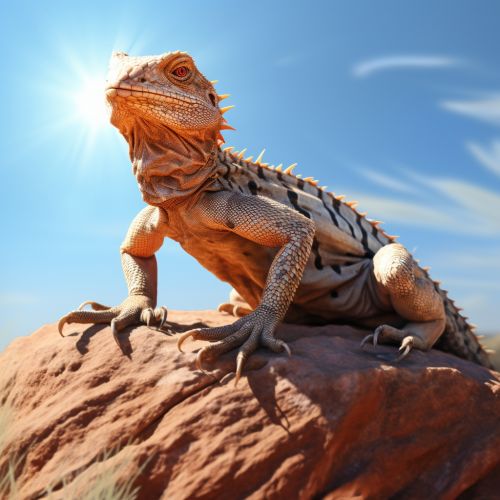Adaptations of desert animals
Introduction
Desert animals, or xerocoles, are species that have evolved to survive in the harsh conditions of deserts around the world. These adaptations include physiological changes, behavioral modifications, and morphological features that allow these animals to thrive in environments with extreme temperatures, minimal water, and scarce food resources.
Physiological Adaptations
Physiological adaptations are internal body processes that help an animal survive in its environment.
Thermoregulation
Desert animals have developed unique ways to regulate their body temperature, a process known as thermoregulation. Many desert animals are ectotherms, meaning they rely on environmental heat sources to regulate their body temperature.


For example, reptiles like the desert iguana and the Gila monster bask in the sun during the cooler morning hours to raise their body temperature. Conversely, they seek shade during the hottest parts of the day to avoid overheating.
Water Conservation
Water conservation is crucial for survival in arid environments. Desert animals have developed various strategies to minimize water loss and maximize water intake.
For instance, the kangaroo rat is capable of producing highly concentrated urine to reduce water loss. It also obtains water from the metabolic breakdown of seeds, its primary food source.
Behavioral Adaptations
Behavioral adaptations are actions animals take to survive in their environments.
Nocturnal Activity
Many desert animals are nocturnal, active during the night and resting during the day. This behavior helps them avoid the extreme heat of the desert day. Examples include the fennec fox and the jerboa.
Burrowing
Burrowing is another common behavior among desert animals. By creating burrows, animals can escape the extreme heat of the day and the cold of the night. The desert tortoise and the desert hedgehog are examples of burrowing desert animals.
Morphological Adaptations
Morphological adaptations are physical features that help an animal survive in its environment.
Body Size
Many desert animals are small in size, which helps them to minimize water loss and heat gain. Smaller animals have a larger surface area relative to their volume, which allows for more efficient heat loss.
Coloration
Desert animals often have coloration that matches their environment, providing camouflage. This helps them avoid predators and sneak up on prey. For example, the horned viper has a sandy color that blends in with the desert landscape.
Conclusion
Desert animals have developed a wide range of adaptations to survive in some of the harshest environments on earth. These adaptations are a testament to the resilience and versatility of life on earth.
